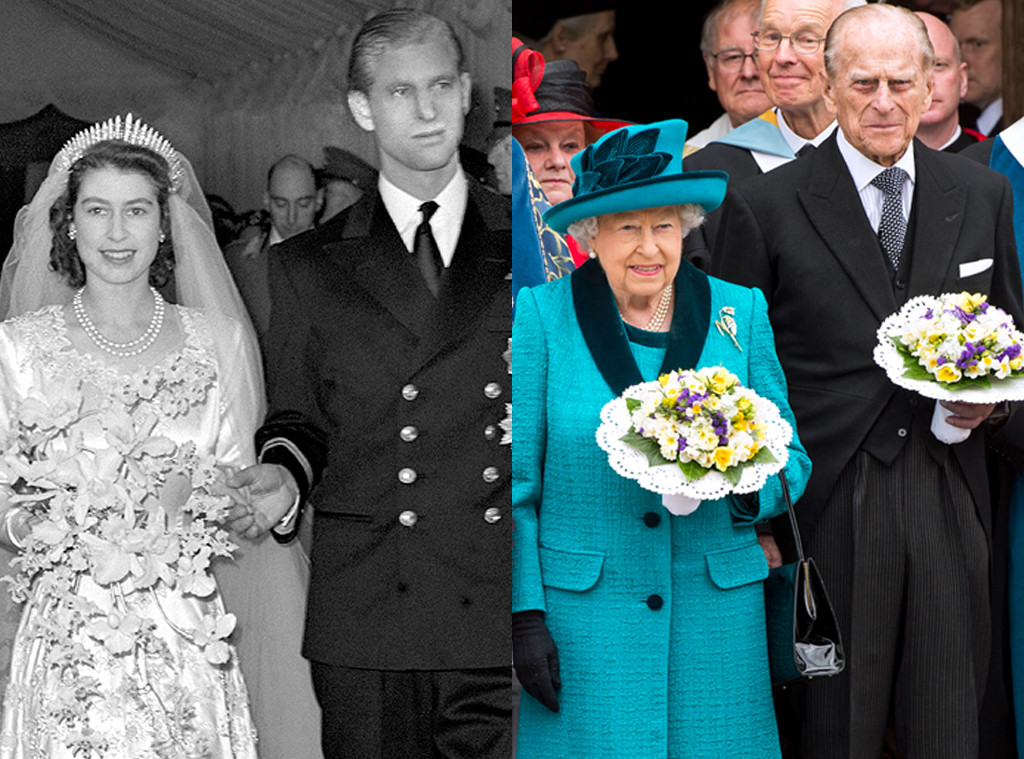
It’s really a very interesting question. The titles are not completely symmetrical with regard to the genders, and there is a subtle kind of sexism at work.
The most direct answer is this: Because if there were both a King and Queen, the King would automatically be assumed to be more important and powerful.
Therefore, Queen Elizabeth’s husband, Philip, is “merely” a Prince and a Duke, thereby assuring that he is NOT more important than her.
You also need to understand that a monarchy is just what the word implies: RULE BY ONE. Dual monarchies (joint rule by both a King and Queen) have happened, but they are the exceptions, not the rule.
Currently, Queen Elizabeth II is the monarch. Her husband, Philip is merely her consort. Although the Queen’s powers are largely symbolic, they still matter. Specifically, she:
Names (appoints) the Prime Minister, as well as the Archbishop of Canterbury.
Reads reports from all the Cabinet ministers.
Approves every Act of Parliament by applying the Royal Seal.
In theory, grants all titles of nobility (although in reality the choices are made by a committee).
Receives foreign ambassadors.
Philip, in contrast, does none of these things. She opens Parliament by giving a speech; he simply sits beside her, which is about the full extent of his Constitutional role.
There are really four ways to be part of a royal couple:
The issue of the roles of King and Queen plays an interesting part of English history. Note that Elizabeth I (Shakespeare’s queen) never married, largely because if she had, the assumption was that her husband would become King… and therefore outrank her!
The situation was resolved by the time of Queen Victoria (if not sooner). No one wanted to displace Victoria as reigning queen — and therefore the solution was to make her foreign-born spouse, Albert, merely a prince but not a king.
That solution — which is just like the solution for Queen Elizabeth II — enabled the queen to be married but lose none of her power to her spouse.
And the last thing to remember: in the English monarchy, the line of royal succession is clearly set through inheritance. If a woman inherits the throne she becomes Reigning Queen. No husband, step-child, or anyone outside the line of succession can take the throne. The spouse, then, as mentioned above, is never more than “consort,” and the consort’s powers are very limited.
But remember, also, that both the monarch and the consort do mostly the same things in practice: Smile and wave at the crowd.
The most direct answer is this: Because if there were both a King and Queen, the King would automatically be assumed to be more important and powerful.
Therefore, Queen Elizabeth’s husband, Philip, is “merely” a Prince and a Duke, thereby assuring that he is NOT more important than her.
You also need to understand that a monarchy is just what the word implies: RULE BY ONE. Dual monarchies (joint rule by both a King and Queen) have happened, but they are the exceptions, not the rule.
Currently, Queen Elizabeth II is the monarch. Her husband, Philip is merely her consort. Although the Queen’s powers are largely symbolic, they still matter. Specifically, she:
Names (appoints) the Prime Minister, as well as the Archbishop of Canterbury.
Reads reports from all the Cabinet ministers.
Approves every Act of Parliament by applying the Royal Seal.
In theory, grants all titles of nobility (although in reality the choices are made by a committee).
Receives foreign ambassadors.
Philip, in contrast, does none of these things. She opens Parliament by giving a speech; he simply sits beside her, which is about the full extent of his Constitutional role.
There are really four ways to be part of a royal couple:
- King. If you are the king, you are assumed to be the monarch. Always. You rule! (Well, actually you “reign.”)
- Reigning Queen. This is a female monarch and is the role of both Queen Elizabeth II and her predecessor, Victoria.
- Queen Consort. This is merely the wife of a king, but NOT a monarch. Elizabeth II’s mom was Queen Consort.
- Prince Consort. This is Philip’s role. The consort, in this case, is “merely” a prince/duke, to contrast to him being a king — because a king is always assumed to be reigning not a consort.
The issue of the roles of King and Queen plays an interesting part of English history. Note that Elizabeth I (Shakespeare’s queen) never married, largely because if she had, the assumption was that her husband would become King… and therefore outrank her!
The situation was resolved by the time of Queen Victoria (if not sooner). No one wanted to displace Victoria as reigning queen — and therefore the solution was to make her foreign-born spouse, Albert, merely a prince but not a king.
That solution — which is just like the solution for Queen Elizabeth II — enabled the queen to be married but lose none of her power to her spouse.
And the last thing to remember: in the English monarchy, the line of royal succession is clearly set through inheritance. If a woman inherits the throne she becomes Reigning Queen. No husband, step-child, or anyone outside the line of succession can take the throne. The spouse, then, as mentioned above, is never more than “consort,” and the consort’s powers are very limited.
But remember, also, that both the monarch and the consort do mostly the same things in practice: Smile and wave at the crowd.
(Quora answer by Brian Overland)



No comments:
Post a Comment